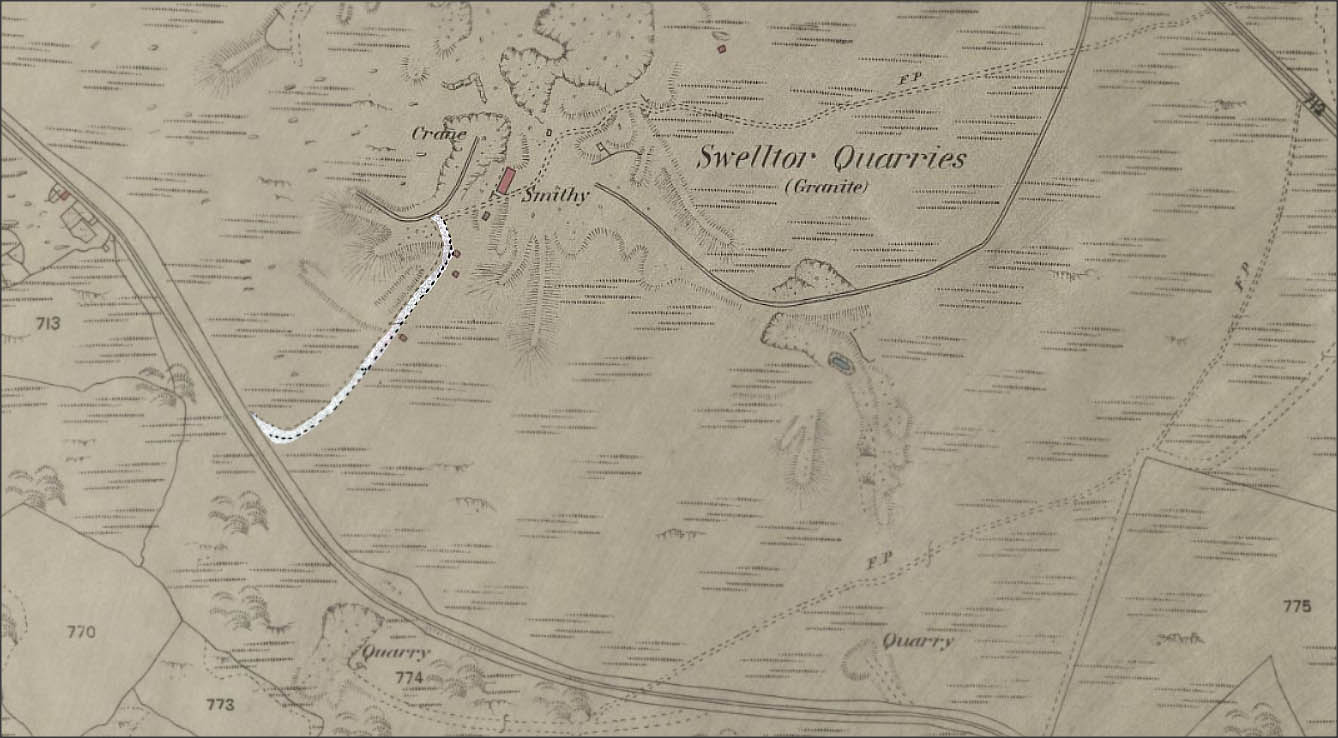Just prior to reaching Mile Post 20 on the Plymouth and Dartmoor Railway, there existed a loop that formed a direct connection, via a lengthy siding, to the eastern side of the Swelltor Granite Quarries. It remains uncertain whether this loop and siding were originally part of the Plymouth and Dartmoor Railway. However, they are depicted on the Ordnance Survey map surveyed in 1883, predating the construction of the Princetown Railway. The map, published in 1885, clearly designates the line as the “GWR Princetown Branch.” Although the building on the northern side of the line is illustrated, no signals are present.
In July 1895, the operators of the Foggintor Quarries, Messrs Pethick Brothers, who were Plymouth-based builders and contractors, entered into a Private Siding Agreement with the Great Western Railway Company. By 1904, when the area was surveyed once more, the original loop had been dismantled and replaced with a new loop branching off from the main line towards the north, leading to the Foggintor Quarries. These new sidings were known as Royal Oak Sidings and were operated from a Ground Frame located 8 miles and 75 chains from Yelverton. The sidings included a weighbridge. The siding that previously served the eastern side of the Swelltor Quarries had been removed, and the footpath marking the route of the original siding indicated that the loop mentioned earlier was situated slightly further north of the Royal Oak Sidings. Mile Post 9 was situated just beyond the Sidings.
In 1928, King Tor Halt was established to cater to the convenience of the workers and their families. However, the Quarries eventually ceased operations, and during 1934, the Royal Oak Sidings were dismantled.


